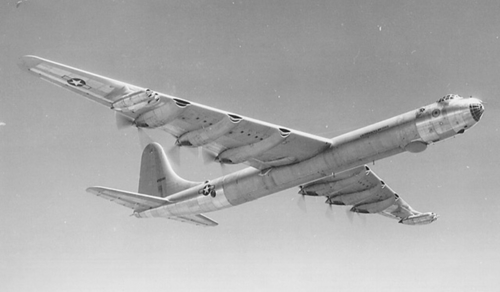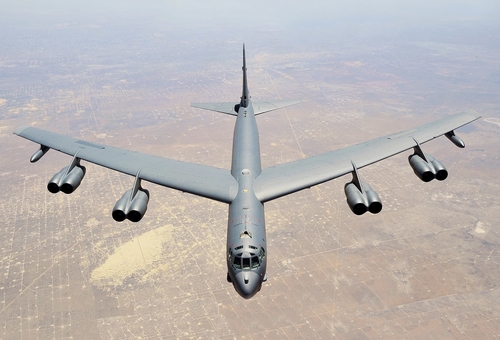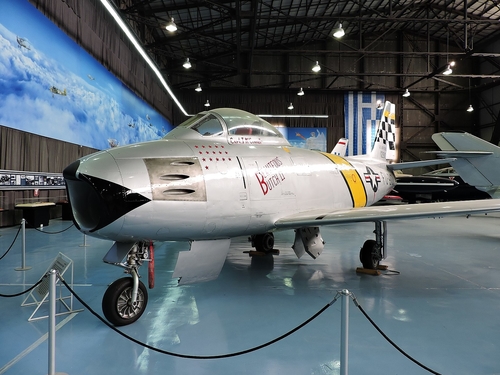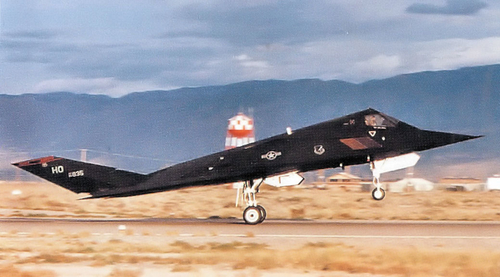The jet age is one of the most important (if not the most important) times in the history of aviation.
Learn about some of the more important milestones of the Jet Age below:
Notable Jet Age Experiments / Tests / Pioneers
French Ramjet Experiment
French engineer Rene Leducis became interested in aircraft propulsion when he was young.
By the time he reached his thirties, Leduc started to test ramjet engines to see if they could propel an aircraft through the air.
Related Article – Airline Transport Pilot Certificate (ATP): 4 Things You Need To Know
The ramjet engine works by air being forced into the main intake, and the intake creates massive amounts of pressure.

Eventually thrust is produced by expanded gases that are exhausted.
Leducis’ first try at creating this system was a success in 1935, and it was able to produce and sustain 0.039kN or 9lb of thrust for three minutes.
The experiments continued into the late 1930s, but the research stopped with the German occupation.
In 1946, the research picked back up and the 0.10 aircraft was developed.
It made several flights as a glider, and it collected data to better understand the aerodynamics that influenced the airframe and engine.
In 1949, the 0.10 had its first test flight, and it reached 500mph during the third test.
Leduc also designed two more prototypes, the 0.16 and 17, but they were not revolutionary aircraft.
However, the 0.21 was ground-breaking.
It had a wing-span of 38 ft, the fuselage was 41ft in length with a height of 9ft, and the maximum take-off weight was 13,200 lbs.
With the ramjet, the 0.21 was capable of reaching speeds above 620 mph.
The 0.21 had its maiden flight on May 16, 1953, and it lived up to its name.
Breaking The Sound Barrier
The constant developments in flight speed began right after the introduction of jet-powered flight, and the first challenge was to overcome the sound barrier.
ON October 14, 1947, “Chuck” Yeager became the first pilot to officially “break the sound barrier.”

With the experimental Bell X-1, he flew at Mach 1.015 at an altitude of forty-two thousand feet.
The first woman aviator to break the sound barrier was Jacqueline Cochran, when she flew a Canadian F-86E Sabre jet on May 18. 1953.
Shortly after an American F-100 Super Sabre flew above Mach 1, and test pilot A. Scott Crossfield hit Mach 2.01with a D-558-2 Douglas Skyrocket that launched from a B-29.
To finish out that year, Chuck Yeager reached Mach 2.44.
Related Article – 12 Runway Markings and Signs Explained By An Actual Pilot
The development of the Douglas Company X-3 Stiletto, one of the most impressively designed aircraft ever created, had a very disappointing life after failing to set any speed records.

Lockheed followed up with the SR-71 Blackbird which was extremely fast, even for missiles.
While the development of super-speed aircraft continues, most are specifically designed for smaller wars.
Frank Whittle
Air Commodore Sir Frank Whittle, an English Royal Air Force Officer, is credited with inventing the turbojet engine.
Whittle was interested in engineering at an early age, and he eventually joined the RAF after previously being denied entry.
He was first an Aircraft Apprentice before taking part in the officer training course at Cranwell, and he went on to become an accomplished pilot.
As Whittle developed his thesis, he came up with the fundamental concepts that helped him create the turbojet engine.
In 1930, he took out a patent on his design.

Whittle did not have the support of the Air Ministry, so he created Power Jets Ltd with two retired RAF servicemen and support from the firm British Thomson-Houston.
The first prototype ran in 1937, and interest followed along with contracts for more engines.

Whittle suffered from extreme anxiety and stress, resulting in health issues during 1940.
Power Jets was nationalised in 1944, and Whittle resigned from the board in 1946.
He retired from the RAF in 1948 and joined BOAC as a technical advisor.
Eventually, Whittle worked at Shell and Bristol Aero Engines before emigrating to the U.S. in 1976, where he became a NAVAIR Research Professor at the United States Naval Academy.
Related Article – 14 Taxiway Markings, Signs, and Lights Explained By An Actual Pilot
The U.S. Long Range, Heavy Manned Bomber Program
The current outlook is that the B-52, the B-1 Lancer and the B-2 Spirit bomber will continue to be extremely important to the U.S. Air Force deterrence capability.

The Pentagon projects that this will be the case beyond 2035.
At that point, the bomber force will fall below the minimum of 170 front line aircraft.
The B-52 will likely keep flying until 2045, which is almost a century after it first took to the air.
By 2035, the Initial Operational Capability should have already introduced the next generation long-range heavy bomber.
There is a current programme that is researching and developing the next generation bomber, but there are constant changes in manufacturing techniques and technology advancements.
Because of this, the original timeline could be changed.
The new Light Bomber Concept is seeking to develop a medium-size aircraft consisting of tactical fighting advantages as well as a strategic mission profile of a heavy bomber.
It will likely be advanced enough to be virtually invisible to even the best radar systems.
According to the Scientific Advisory, the new bomber will need to be capable of taking off from the U.S. and fly anywhere in the world.
Notable Air Campaigns in the Jet Age
The Falklands War
The Falklands War was an undeclared war between Argentina and the United Kingdom that lasted 10 weeks.
The conflict erupted in 1982 over a dispute between two British dependent territories in the South Atlantic: the Falkland Islands and South Georgia and South Sandwich Islands.
The war saw the use of many different types of aircraft as well as helicopters.
After the Argentine invasion, the RAF launched its first mission, sending a reconnaissance sortie flown by a Nimrob MR1 of No.42 squadron.

On April 21, an Argentine Air Force Boeing 707 was intercepted as it was carrying out a reconnaissance mission.
On April 30, the Black Buck raids started with a Vulcan bombing Stanley Airfield.
The day after, Canberra PR9s of No. 39 Squadron spotted the Argentine Cruiser, and it was sank by H.M.S. Conqueror.
On May 4, H.M.S. Sheffield was hit by an Argentine Exocet missile, and it sank shortly after.
The same day, nine Harrier GR3s from No. 1 Squadron, carrying Sidewinders and naval 2-inch rockets, were sent from the UK to Ascención in 9 hours and 15 minutes.

Two days later, two Sea Harriers were lost after colliding in bad weather.
Aside from airplanes, helicopters were also used in the war.
The helicopter was important in providing transport, and it was very difficult to shoot down.
Related Article – 5 Best Low Time Pilot Jobs With 250 Hours
B-52’s in Vietnam
In 1971, President Richard Nixon ordered bombing raids, termed “Linebacker II,” on Hanoi in North Vietnam.
The plane that was chosen for the raids was the Boeing B-52 Stratofortress, due to its all-weather bombing capabilities.
The B-52 was also an important aspect of the nuclear delivery triad, making it an extremely powerful weapon.

It was a risky move, since the downing of such a powerful piece of American weaponry would portray the U.S. as weak.
Linebacker II began on December 18, 1972, when 129 B-52s were escorted by 7th Air Force and U.S. Navy, including KC-135 refueling planes, F-4 fighter escorts, F-105 Wild Weasels, Navy EA-6 and EB-66 radar-jamming planes, search and rescue teams, and F-4 chaff planes.
The first night saw 94 percent of the bombs released, but three B-52s were shot down.
Since the U.S. followed the same pattern each day, the North Vietnamese started to pick up on it.
On the third day, six B-52s were taken down, and it led to public outcry and criticism of the bombings.
The bombings continued, and Hanoi contacted Washington on Day Eight to resume talks.
Linebacker II ended on December 30, and a cease-fire was signed on January 23, 1973.
The Moroccan Campaign
The Moroccan campaign of the mid to late 1970s was an extremely important moment in the history of North Africa.
After the Spanish Sahara in Morocco was partitioned between the Moroccan government and Mauretania, the Moroccan military controlled all the Western Sahara territory.
The main opposition to the new system was the Polisario (Popular Front for the liberation of Seguiet elHamra and Rio de Oro) out of Algeria.
Fighting broke out by the Spring of 1974, and the French armament arrived in 1976, including Jaguars and Mirage F-1s.
The Moroccan Air Force (MAF) had a small fleet consisting of Dassault-Dornier Alpha Jets, F-5s, and Mirage F-1s.

The MAF’s F-5As and Es, along with a squadron of Magisters, were the first aircraft to take part in the fighting, and they were used to hit the Polisario for three years.
Polisario’s ground forces eventually took down fourteen F-5As between 1978 and 1987, after the introduction of SA-7s and 6s batteries.
The MAF came up with a new and improved Dassault-Dornier Alpha Jet, the E model.
The new additions were impressive, but they couldn’t stop the Polisario attacks.
Two years of negotiations took place, along with the involvement of the UN, and a truce was reached in 1991.
Helicopters in War
Starting in WWII, the usefulness of helicopters in war began to be known, although they were still limited as supply craft and for rescue missions.
The number of helicopters increased by Korea, but they still were used mostly for support roles.
On November 4, 1952, the army and the air force signed an agreement that redefined helicopters by function performed in the combat zone, which led to the use of large helicopters designated for war.
This new type of warfare was first deployed in the Vietnam War, and it was termed “air mobility.”
American H-21 helicopters were used to move troops, but the Viet Cong quickly learned how to shoot at both H-21 and UH-1 Huey helicopters.
By the mid-1960s, helicopters were used to move massive amounts of troops, and some combat operations involved over 100 of them.

The use of the helicopter drastically changed warfare.
Instead of armies advancing slowly across large swaths of land, the U.S. Army was now able to carry large numbers of troops and drop them right into enemy territory.
By the time of the Persian Gulf War, attack helicopters were covering the battlefield at night, and they were easily able to destroy Iraqi tanks and other vehicles.

While the helicopter was revolutionary for warfare, it still has a slow speed, short-range, and limited lifting capabilities.
Related Article – Instrument Proficiency Check (IPC): 4 Things You Need To Know
Guided Bombs
Before the V-1 or V-2, Germany deployed more advanced guided strike weapons including the Henschel’s Hs 293A and Ruhrstahl’s SD1400X (Fritz X).
Both of those were primarily used against ships.
Out of fifteen battleships that were lost, the 41,650-ton Italian Roma was sunk by a Fritz X.
The guided bombs also hit the British battleship Watspire and put it out for 6 months, as well as the cruiser USS Philadelphia.
The cruiser USS Savannah was heavily damaged, and the Royal Navy light cruiser Spartan was sunk.

The first successful guided-missile attack came from the Henschel Hs 293, and it sank the British sloop Egret on August 27, 1943.
In order to prevent the missile from freezing, warm exhaust air was channeled into it, and it was designed to be carried under a bomber.
After being dropped, it would fall for 90m before the rocket reached its maximum thrust.
After dropping the missile, the parent bomber would continue on its pre-designated course.
During WWII, different guided weapons were used including the GB-4.
The TDR-1 Assault Drone was a remote-controlled weapon used in the Pacific.

Another successful guided weapon was a glide bomb, the autonomous ASM-2 BAT used in the Pacific Theatre.
Guided weapons were a big part of the “Shock and Awe” campaign in Iraq.
These weapons played a huge aspect in warfare throughout the years, and they continue to get developed further.
The Cold War
The tensions between the U.S. and the Soviet Union resulted in many developments within aircraft research, design, and development.
After the Korean War, the first airplane that the U.S. added to its weaponry was the Consolidated B-36 Peacemaker, which contained ten engines.
It took the place of the B-9 and B-50 Bombers from World War II and the Korean War.

Eventually, the B-57 was developed, and it only required one in-flight refueling.
It was developed by Martin, and Boeing also improved their B-29 and B-S0.
While the Strategic Air Command (SAC) waited for a better plane, it used the Convair B-36.
The main problem with the aircraft was that it only had a maximum speed of 435 mph.
The SAC ended up selecting the Boeing B-47 Stratojet, and they eventually picked the B-52 Stratofortress.
The B-52 Stratofortress is considered one of the best military aircraft ever developed.

Both of the planes were fast, cruising at 600 and 650 mph respectively, and they had a good range and maneuverability.
The Soviets used a downed B-29 bomber to kickstart their development.
It was disassembled for two years, and they studied every aspect of it.
At the height of the Soviet arsenal, it had the jet-powered TU-16 Badger and the Myasishchev M-4 Bison, which were considered their versions of the B-47 and B-52.
Cold War Jet Fighters
Both the U.S. and the Soviet Union produced jet-powered aircraft during the Cold War.
The Shooting Star was the first jet used by the U.S. Air Force, and the FH-1 Phantom was the first jet fighter used by the U.S. Navy.
In the Korean War, the North American FJ-1 Fury was the first to take part in the fighting.
The F-86 Sabre was inspired by the Fury, and it was updated to eventually develop the F-100 Super Sabre.

The main Soviet fighter during that time was the MiG-19, and it sometimes went against the U.S. aircraft.
The major turning point for the design of jet fighters came in the 1960s with the development of the McDonnell Douglas F4H Phantom.
The F4H Phantom was a versatile fighter-bomber.
The Russians eventually built the MiG-21, which was a delta-wing jet that was capable of carrying air-to-air missiles.
The jet was best used in air-to-air combat, not ground support or bombing.
The first airplane to be developed in secret was the Stealth Fighter in 1983.

One of the planes that the Soviets could not replicate was the British-developed and American-adopted Hawker-Siddeley Harrier.
The aircraft was capable of thrusting downwards, and it could hover and take off vertically.
These are just some of the many weapons developed during the Cold War, an extremely important moment in aircraft history.
